What is a sales process?
“Sales process” most often refers to a repeatable set of steps your sales team takes with a prospect to move them from early stage to a closed customer. A good sales process helps your reps consistently close deals by giving them a framework to follow.
Building a repeatable, scalable sales process is tough. There's no shortage of diagrams, methodologies, or experts with opinions on exactly how you should be doing things. So where should you start? Right here. We’ve pulled together an introduction to all things “sales process” to help you get started down the road toward defining what your company’s ideal sales process should look like.
What are the steps of a sales process?
- Identify Prospect’s/White Space
- Connect/Social Selling
- Research/evaluate
- Discovery/Present/Demo
- Legal T&C/Close
The common stages of the sales process include:
1. Identify Prospect’s/White Space
Prospecting is the process of sourcing new, early stage leads to begin a sales process with. Prospecting might involve online research on sites like LinkedIn or Quora. It also might take place at conferences or industry events. And you can prospect by asking current clients or colleagues for referrals of individuals who might be interested in your product/service.
Prospecting is a vital part of the sales process -- and part of most reps' daily or weekly workflow.
But, selling to new prospects can be difficult without the right strategy and tools. White space is the gap between what products or services your customer has invested in, and the other products or services that your company or business has to offer. It is the discovery process where you align Products or Services with the C-Suite and specific Lines of Business.
2. Connect/Social Selling
Initiating contact with those early stage leads to gather information and judge their worthiness for moving forward. This commonly happens during a "connect" or "discovery" call.
The salesperson will schedule a time to learn about the prospects pain points, challenges, and business or career goals. The salesperson might ask questions like, "Tell me about your role. What do you do day-to-day?" "What problem are you trying to solve?" and "Why is this a priority today?"
What is Social Selling?
Social selling is about leveraging your social network to find the right prospects, build trusted relationships, and ultimately, achieve your sales goals. This sales technique enables better sales lead generation and sales prospecting process and eliminates the need for cold calling. Building and maintaining relationships is easier within the network that you and your customer trust.
3. Research/evaluate
Learning more about a prospect and their company as they progress through the sales process can help sales reps offer a more tailored experience, and improve the likelihood a deal will close.
This might require the salesperson to speak with other people at the company in different departments to get a holistic view of the business and their objectives over the coming year. Many longtime reps say a good salesperson should understand the company better than their prospect who works there and have a great internal coach as well as an executive sponsor.
4. Discovery/Present/Demo
The importance of Discovery isn’t new, but here’s what is: your buyers’ attention is at an all-time premium. Noise is going up, and patience is going down. Personalization is your only viable weapon.
And it pays off. Gartner predicts that B2B companies that use personalization will increase revenues by 15%. What does this mean for Demos? It means you’re not going to win giving your prospect a firehose of product features. Instead, it’s about focusing to find the fit for that prospect.
A typical stage of many sales processes is to run a formal presentation or demonstration of what is being sold. This stage is time-consuming, so it typically comes deeper in the sales process and only for well-qualified prospects.
The presentation should be tailored to meet the prospect's unique use case and pain points. The salesperson might bring a engineer or executive to the meeting with them, to demonstrate the level of service the customer will receive and to answer more technical questions.
5. Legal T&C’s/Close
This stage refers to any late-stage activities that happen as a deal approaches closing. It varies widely from company to company, and may include things like delivering a quote or proposal, negotiation, achieving the buy-in of decision makers, and other actions.
The close is what every salesperson works toward. It should result in a mutually beneficial contractual agreement between the prospect and the seller. Once a deal closes, the salesperson will receive commission on price they negotiated with their client, and the account usually passes to an account manager or customer success representative.


